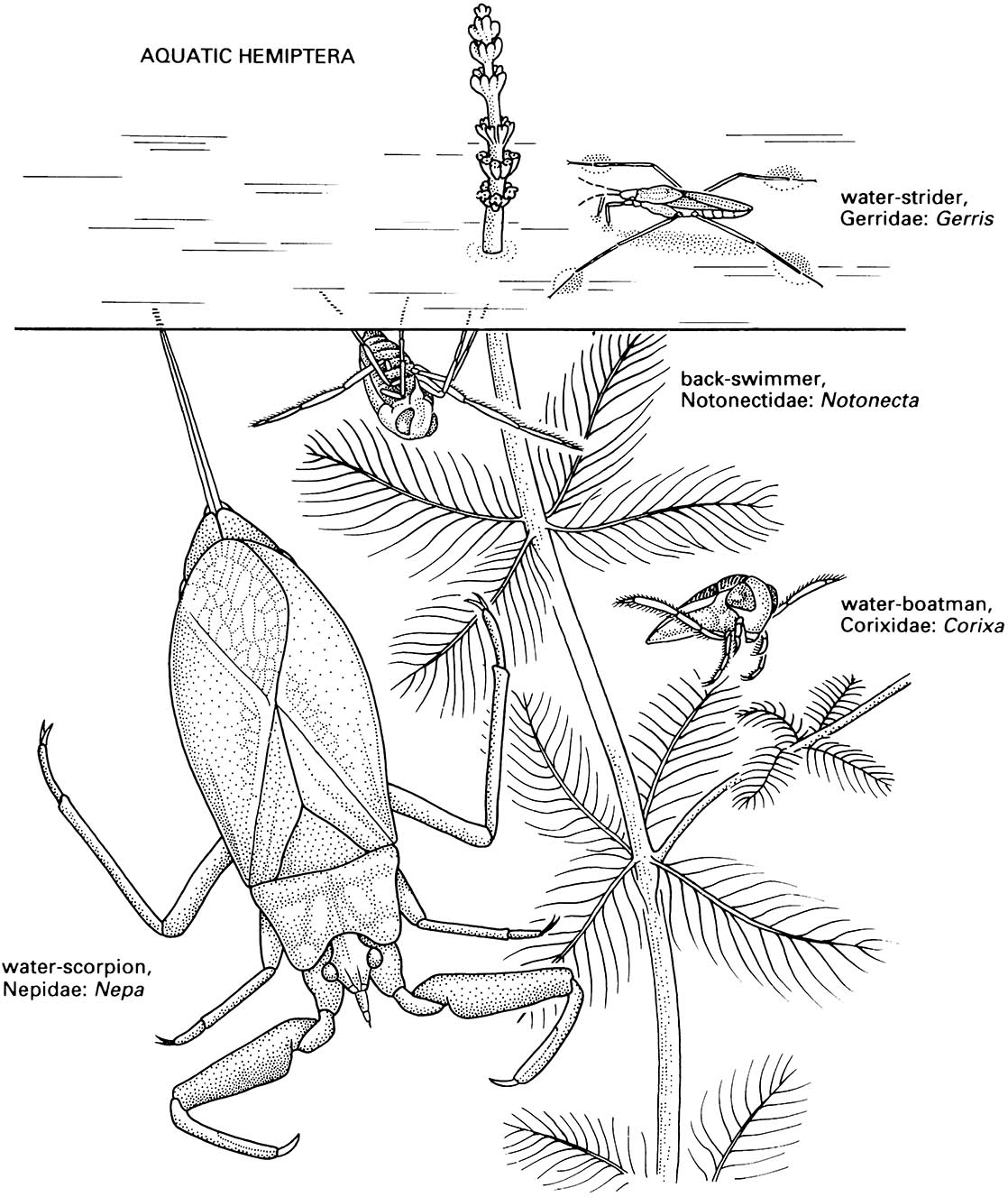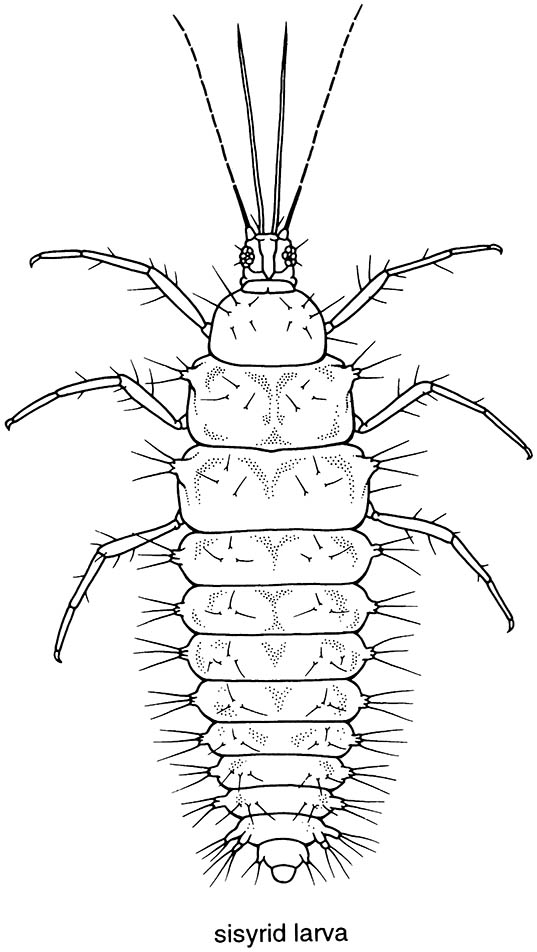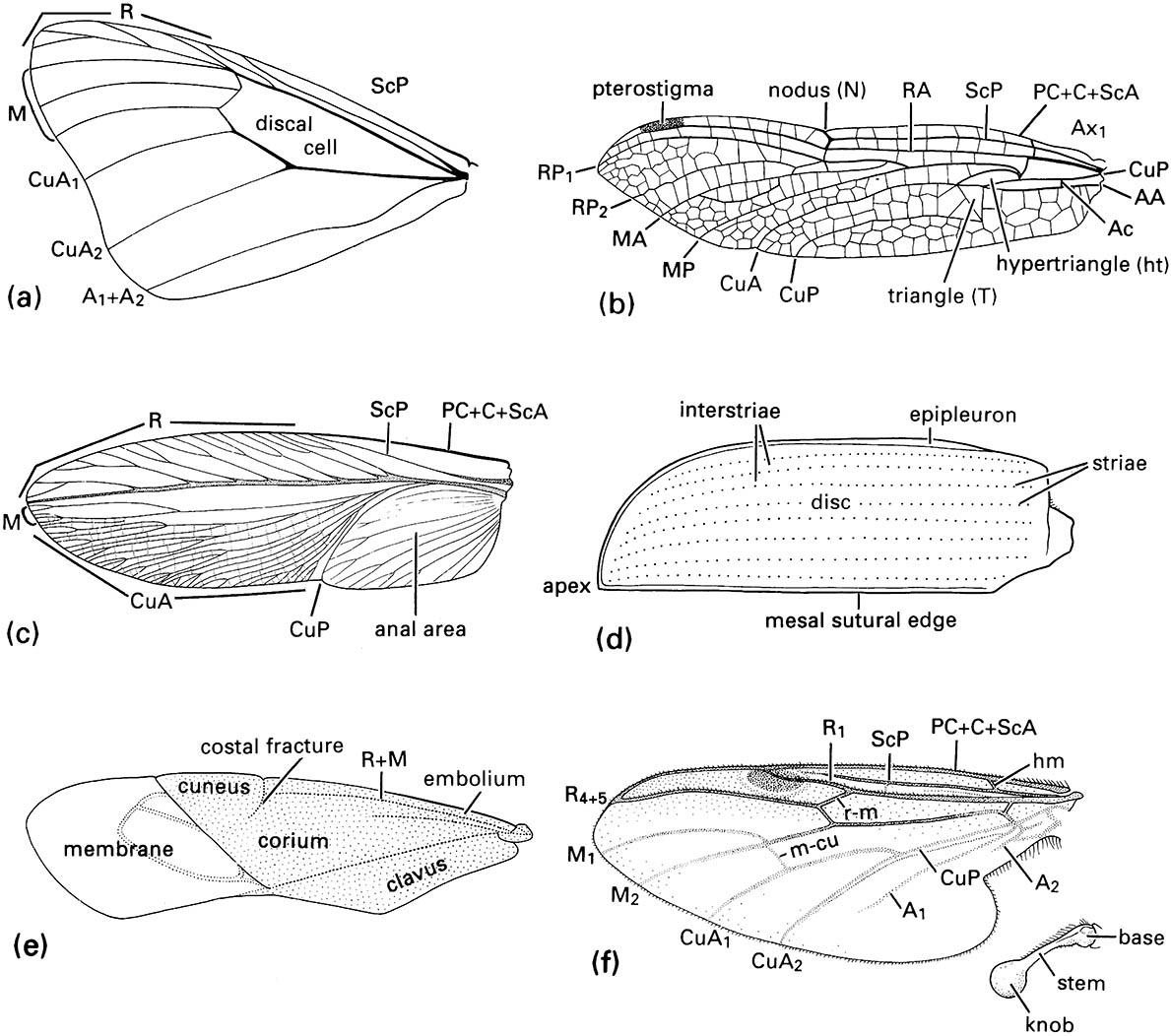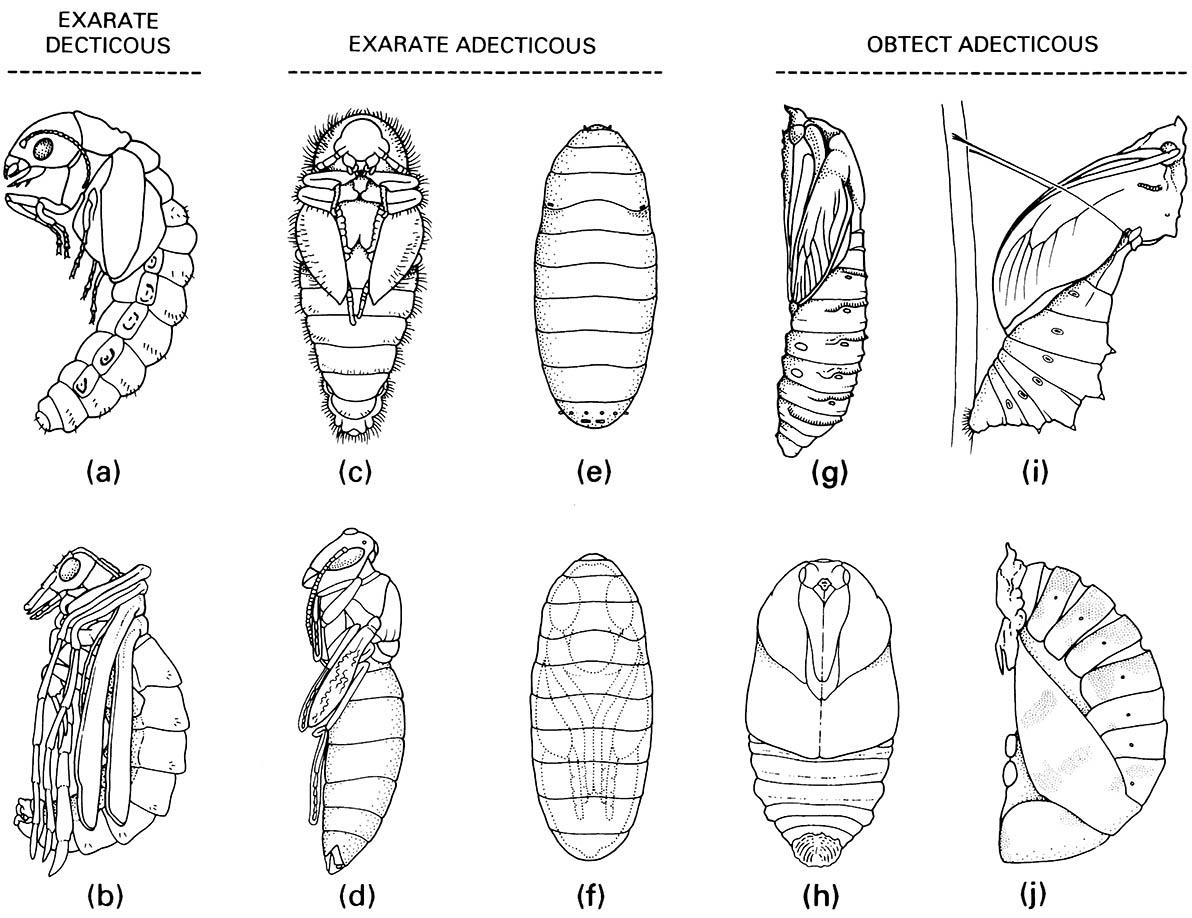Box 10.6. Other aquatic orders
Hemiptera (bugs)
Amongst these hemimetabolous insects, there are about 4000 aquatic and semi-aquatic (including marine) species in about 20 families worldwide, belonging to three heteropteran infraorders (Gerromorpha, Leptopodomorpha, and Nepomorpha). These possess the subordinal characteristics (Box 11.8) of mouthparts modified as a rostrum (beak) and fore wings as hemelytra. They are spiraculate with various gaseous-exchange mechanisms. Nymphs have one and adults have two or more tarsal segments. The three- to five- segmented antennae are inconspicuous in aquatic groups but obvious in semi-aquatic ones. There is often reduction, loss, and/or polymorphism of wings. There are five (rarely four) nymphal instars and species are often univoltine. Gerromorphs (water-striders, represented here by Gerris) scavenge or are predatory on the water surface. Diving taxa are either predatory — for example back-swimmers (Notonectidae) such as Notonecta, water-scorpions (Nepidae) such as Nepa, and giant water bugs (Belostomatidae) (Box 5.5) — or phytophagous detritivores — for example some water-boatmen (Corixidae) such as Corixa.
Coleoptera (beetles)
The Coleoptera is a diverse order, and contains over 5000 aquatic species (although these form less than 2% of the world’s described beetle species). About 10 families are exclusively aquatic as larvae and adults, an additional few are predominantly aquatic as larvae and terrestrial as adults or vice versa, and several more have sporadic aquatic representation. They are holometabolous, and adults diagnostically have the mesothoracic wings modified as rigid elytra (Fig. 2.22d and Box 11.10). Gaseous exchange in adults is usually by temporary or permanent air stores. The larvae are very variable, but all have a distinct sclerotized head with strongly developed mandibles and two- or three- segmented antennae. They have three pairs of jointed thoracic legs, and lack abdominal prolegs. The tracheal system is open and peripneustic with nine pairs of spiracles, but there is a variably reduced spiracle number in most aquatic larvae; some have lateral and/or ventral abdominal gills, sometimes hidden beneath the terminal sternite. Pupation is terrestrial (except in some Psephenidae), and the pupa lacks functional mandibles. Aquatic Coleoptera exhibit diverse feeding habits, but both larvae and adults of most species are predatory.
Neuroptera (lacewings)
The lacewings are holometabolous, predominantly terrestrial predators (Box 13.4), but the approximately 50 species of spongillaflies (Sisyridae) have aquatic larvae. Sisyrid larvae (as illustrated here, after CSIRO 1970) have elongate stylet-like mandibles, filamentous antennae, paired ventral abdominal gills, and lack terminal prolegs. The pupa has functional mandibles. Adults are small and soft-bodied with subequal wings lacking an anal lobe on the hind wing. The eggs are laid in trees overhanging running water, and hatching larvae drop into the water where they seek out and feed upon sponges by sucking out the living cells. There are three larval instars, with rapid development, and they may be multivoltine. Pupation takes place in a silken cocoon out of water.
Megaloptera (alderflies, dobsonflies, fishflies)
Megalopterans are holometabolous, with about 300 species in two families worldwide — Sialidae (alderflies, with adults 10–15 mm long) and the larger Corydalidae (dobsonflies and fishflies, with adults up to 75 mm long). Adults (illustrated in Box 13.4) have unspecialized mouthparts with strong mandibles. The wings are unequal, with a large pleated anal field on the hind wing that infolds when the wings are at rest over the back. The abdomen is soft. The larvae are prognathous, with well-developed mouthparts, including three-segmented labial palps (similar-looking gyrinid beetle larvae have one- or two-segmented palps). They are spiraculate, with gills consisting of four- to five-segmented (Sialidae) or two-segmented lateral filaments on the abdominal segments. The larval abdomen terminates in an unsegmented median caudal filament (Sialidae) or a pair of anal prolegs (as shown here for a species of Archichauliodes (Corydalidae)). The pupa is beetle-like (Fig. 6.7a), except that it has mobility due to its free legs and has a head similar to that of the larva, including functional mandibles. The larvae (sometimes called hellgrammites) have 10–12 instars and take at least one year, usually two or more, to develop. Pupation is away from water, often in chambers in damp soil under stones, or in damp timber. The larvae are predatory and scavenging, in lotic and lentic waters, and are intolerant of pollution.




(a) fore wing of a butterfly of Danaus (Lepidoptera: Nymphalidae); (b) fore wing of a dragonfly of Urothemis (Odonata: Anisoptera: Libellulidae); (c) fore wing or tegmen of a cockroach of Periplaneta (Blattodea: Blattidae); (d) fore wing or elytron of a beetle of Anomala (Coleoptera: Scarabaeidae); (e) fore wing or hemelytron of a mirid bug (Hemiptera: Heteroptera: Miridae) showing three wing areas — the membrane, corium, and clavus; (f ) fore wing and haltere of a fly of Bibio (Diptera: Bibionidae) (after J.W.H. Trueman, unpublished. ((a-d) After Youdeowei 1977; (f) after McAlpine 1981)

Exarate decticous pupae: (a) Megaloptera: Sialidae; (b) Mecoptera: Bittacidae. Exarate adecticous pupae: (c) Coleoptera: Dermestidae; (d) Hymenoptera: Vespidae; (e,f ) Diptera: Calliphoridae, puparium and pupa within. Obtect adecticous pupae: (g) Lepidoptera: Cossidae; (h) Lepidoptera: Saturniidae; (i) Lepidoptera: Papilionidae, chrysa lis; (j) Coleoptera: Coccinellidae. ((a) After Evans 1978; (b, c, e, g) after CSIRO 1970; (d) after Chu 1949; (h) after Common 1990; (i) after Common & Waterhouse 1972; (j) after Palmer 1914)



